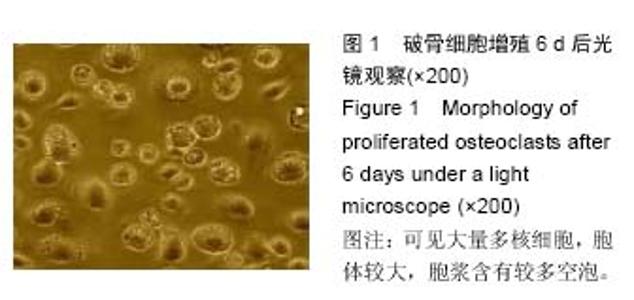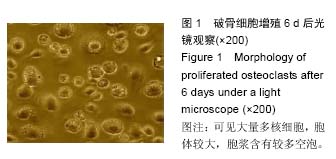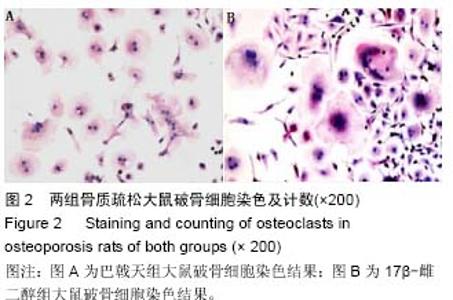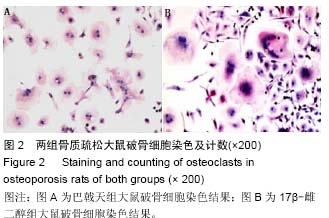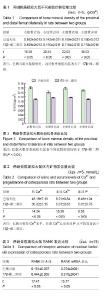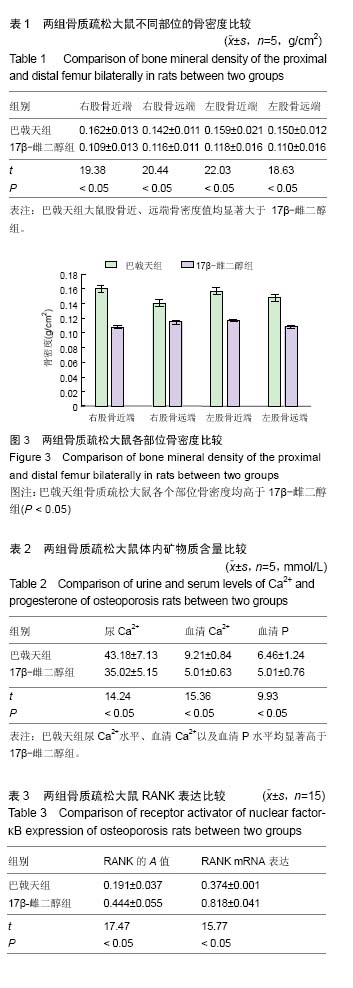| [1] Niu Y,Li Y,Huang H,et al. Asperosaponin VI,a saponin component from dipsacus asper wall,induces osteoblast differenti-ation through bone morphogenetic protein-2/p38 and extracellular signal-regulated kinase 1/2 pathway. Phytother Res.2011;25(11) :1700.
[2] 刘婷,曹春雨,郝然,等. 黔岭淫羊藿总黄酮类成分对 hFOB1.19人SV40转染成骨细胞活性的影响[J].中国实验方剂学杂志,2013,19(2): 267.
[3] Liang W,Lin M,Li X,et al. Icariin promotes bone formation via the BMP-2/Smad4 signal transduction pathway in the hFOB1.19 human osteoblastic cell line. Int J Mol Med.2012;30(4):889.
[4] 李三华,刘坤祥,莫宁萍,等. RT-PCR法检测杜仲总黄酮对大鼠成骨细胞骨钙素表达的影响[J]. 遵义医学院学报, 2011,34(3): 223.
[5] 翟远坤,李志忠,陈克明,等.淫羊藿苷对体外培养乳鼠颅骨成骨细胞增殖、分化及成熟的影响[J].中药材,2011,34(6): 917.
[6] 程孟春,刘艳秋,王莉,等.何首乌和菟丝子对破骨细胞和成骨细胞增殖及分化的影响[J].中国中药杂志,2011,36(19): 2737.
[7] Sammons J,Ahmed N,EI-Sheemy M,et al. The role of BMP-6,IL-6 and BMP-4 in mesenchymal stem cell- dependent bone development: effects on osteoblastic differentiation induced by parathyroid hormone and vitamin D(3). Stem Cells Dev.2004;13(3):273.
[8] Song L,Zhao J,Zhang X,et al.Icarin induces osteoblast proliferation,differentiation and mineralization through estrogen receptor-mediated ERK and JNK signal activation. Eur J Pharmacol. 2013;714(1/3): 15.
[9] Feng R,Feng L,Yuan Z,et al. Icariin protects against glucocorticoid-induced osteoporosis in vitro and prevents glucocorticoid-induced osteocyte apoptosis in vivo. Cell Biochem Biophys.2013;66(1):189.
[10] 武密山,赵素芝,任立中,等.淫羊藿苷对去卵巢大鼠骨和下丘脑不同核团 ERβmRNA 表达的影响[J].中国药理学通报,2011,27(1):29.
[11] 朱晓峰,张荣华,孙升云,等. 淫羊藿素通过雌激素受体和骨形态发生蛋白信号诱导MC3T3-E1 subclone14 细胞分化[J].中国病理生理杂志,2011,27(12): 2351.
[12] Zhang J F,Li G,Chan C Y,et al. Flavonoids of herba epimedii regulate osteogenesis of human mesenchymal stem cells through BMP and Wnt/ beta-catenin signaling pathway. Mol Cell En-docrinol. 2010;314(1):70.
[13] Gnecchi M,Melo LG. Bone marrow-derived mesenchymal stem cells: isolation,expansion, characterization,viral transduction,and production of conditioned medium. Methods Mol Biol.2009;482: 281.
[14] 张贤,朱丽华,钱晓伟,等.杜仲醇提取物诱导骨髓间充质干细胞成骨分化中的Wnt信号途径[J].中国组织工程研究, 2012,16(45):8520.
[15] 翟远坤,葛宝丰,马慧萍,等.淫羊藿苷促进体外培养大鼠骨髓间充质干细胞的成骨性分化[J].中国中药杂志, 2010, 35(23):3219.
[16] Xu YX,Xu B,Wu CL,et al. Dynamic expression of DKK-1 protein in the prcess whereby epimedium- derived flavonoids up-regulate osteogenic and down-regulate adipogenic differentiation of bone marrow stromal cells in ovariectomized rats. Orthop Surg.2011;3(2):119.
[17] 徐祥赫,刘钊,王虹,等.杜仲对MC3T3-E1成骨细胞及OPG/RANKL比值的影响[J].天津医科大学学报, 2013, 19(3):203.
[18] Wang Y,Zhao L,Wang Y,et al. Curculigoside isolated from curculigo orchioides prevents hydrogen peroxide-induced dysfunction and oxidative damage in calvarial osteoblasts. Acta Biochim Biophys Sin (Shanghai). 2012;44( 5) : 431.
[19] Jung Koo H,Sohn EH,Kim Y J,et al. Effect of the combinatory mixture of Rubus coreanus Miquel and Astragalus membranaceus Bunge extracts on ovariectomy-induced osteoporosis in mice and anti-RANK signaling effect. J Ethnopharmacol. 2014; 151(2) :951.
[20] 王莹,王少君,潘静华,等.巴戟天对卵巢切除所致大鼠骨质疏松症的治疗作用及机理探讨[J].中国中医基础医学杂志,2012,18(10):1080.
[21] 赵荣兰,彭效祥,楚海荣,等.IGF-I对破骨细胞骨吸收的促进作用依赖于成骨细胞的协同[J].中华内分泌代谢杂志, 2012,28(12):962-966.
[22] 李楠,王和鸣,郭素华,等.巴戟天多糖对体外培养成骨细胞核心结合因子A1mRNA表达的影响[J].中华中医药杂志, 2007,22(8):517-519.
[23] 郑素玉,陈健,何剑全,等.巴戟天含药血清对成骨-破骨细胞共育体系CAII、NFAT2mRNA表达的影响[J].中国骨质疏松杂志,2013,19(2):120-134.
[24] 何剑全,陈健,郑素玉,等.巴戟天含药血清对原代破骨细胞RANK和CAIImRNA表达的影响[J].中国骨质疏松杂志, 2013,19(5):469-475.
[25] Pourrajab F,Forouzannia SK,Tabatabaee SA. Molecular characteristics of bone marrow mesenchymal stem cells,source of regenerative medicine.Int J Cardiol.2013,16:125-131.
[26] 邓华民,陈杰,刘志权,等.骨保护素/骨保护素配体(OPG/OPGL)在骨髓基质干细胞复合同种骨修复骨缺损中的表达及意义[J].中国骨肿瘤骨病,2010,9: 346-350.
[27] Lacey DL,Boyle WJ,Simonet WS,et al. Bench to bed-side: elucidation of the OPG-RANK-RANKL pathway and the development of denosumab.Nat Rev Drug Discov.2012;11: 401-419.
[28] 支勇,曹式丽.阿霉素肾病动物模型的国外研究进展[J].中国中西医结合肾病杂志,2008,10:933-935.
[29] 吴文先,陈团营,刘霞,等.肾综颗粒抗阿霉素肾病大鼠脂质过氧化损伤的实验研究[J].广西中医药,2008,31:59-61.
[30] Shen CL,Cao JJ,Dagda RY.Supplementation with green tea polyphenols improves bone microstructure and quality in aged,orchidectomized rats.Calcif Tissue Int.2011,88(6):455-463.
[31] Baur A,Henkel J,Bloch W,et al. Effect of exercise on bone and articular cartilage in heterozygous manganese superoxide dismutase (SOD2)deficient mice.Free Radical Res.2011;45(5):550-558.
[32] Shen CL,Yeh JK,Samathanam C,et al. Green tea polyphenols attenuate deterioration of bone microarchitecture in female rats with systemic chronic inflammation. Osteoporosis International.2011;22( 1): 327-337.
[33] Khan UA, Hashimi SM, Bakr MM, et al. Foreign body giant cells and osteoclasts are TRAP positive,have podosome-belts and both require OC-STAMP for cell fusion. J Cell Biochem.2013;114(8):1772.
[34] 远坤,牛银波,潘亚磊,等. 柚皮苷对体外培养乳鼠颅骨成骨细胞增殖和分化成熟的影响[J].中国中药杂志,2013, 38(1): 105.
[35] Li X,Xu RS,Jiang DL,et al. Acid-sensing ion channel 1a is involved in acid-induced osteoclastogenesis by regulating activation of the transcription factor NFATc1. FEBS let.2013;58719):3236.
[36] He B,Hu M,Li S D,et al. Effects of geraniin on osteoclastic bone resorption and matrix metalloproteinase-9 expression .Bioorg Med Chem Lett.2012;23( 3): 630.
[37] Ma B,Zhang Q,Wu D,et al.Strontium fructose 1,6-diphosphate prevents bone loss in a rat model of postmenopausal osteoporosis via the OPG/RANKL / RANK pathway. Acta Pharmacol Sin.2012;33(4): 479-489.
[38] Govindarajan P,Khassawna T,Kampschulte M,et al. Implications of combined ovariectomy and glucocorticoid(dexamethasone)treatment on mineral, microarchitectural,biomechanical and matrix properties of rat bone.Int J Exp Pathol.2013;94(6):387-398.
[39] Vasikaran S,Eastell R,Bruyere O,et al.Markers of bone turnover for the prediction of fracture risk and monitoring of osteoporosis treatment: a need for international reference standards. Osteoporos Int. 2011;22(2): 391-420.
[40] Zeng Yang DX,Sun Wei. Effects of Kidney-yang Tonifying Formula on Inhibition of HPA Axis and Catabolism by Glucocorticoids. Asia-Pacific Traditional Medicine,2012,08(8): 5-8. |
